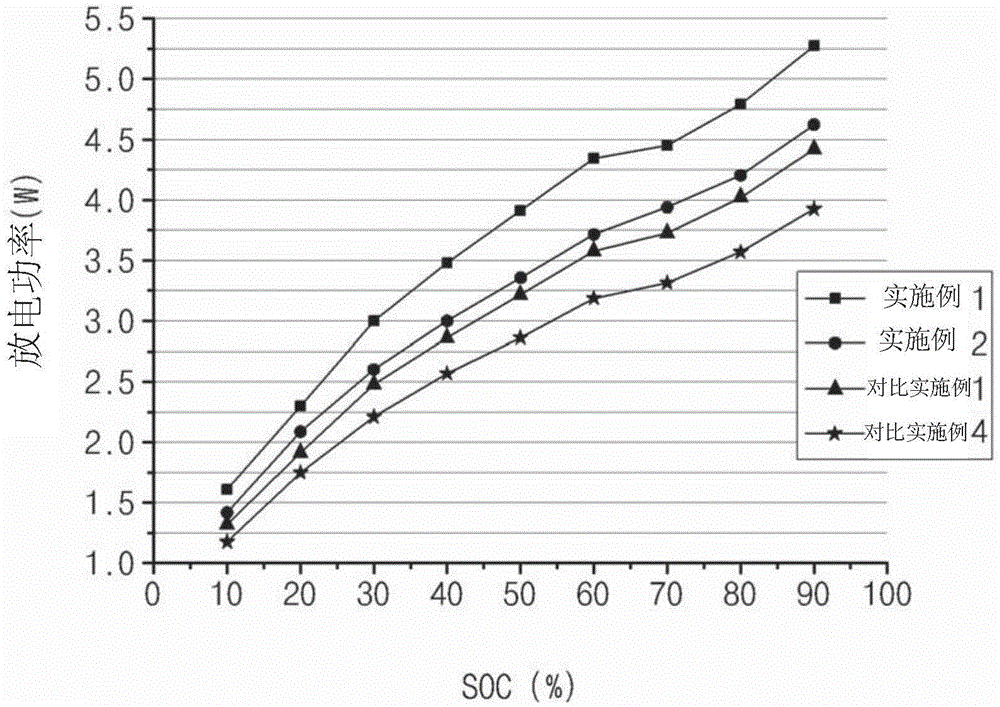Lithium secondary battery manufacturing method
A lithium secondary battery and battery unit technology, applied in secondary battery, electrolyte battery manufacturing, electrode manufacturing, etc., can solve the problems of limited use, gas generation, SEI film instability, etc., and achieve the goal of promoting release and improving performance Effect
- Summary
- Abstract
- Description
- Claims
- Application Information
AI Technical Summary
Problems solved by technology
Method used
Image
Examples
preparation example Construction
[0029] A method of manufacturing a lithium secondary battery according to an embodiment of the present invention includes performing a pretreatment in which an SEI film is formed on an electrode by immersing the electrode in a composition for forming an SEI film and applying a voltage to the electrode, the The composition includes a lithium salt, a non-aqueous organic solvent, and an SEI film-forming agent for forming an SEI film through an electrochemical redox decomposition reaction (step 1); and preparing an electrode assembly using an electrode having an SEI film formed thereon, the The electrode assembly is placed in the battery box, and the electrolyte injection and charging process is performed one or more times (step II).
[0030] According to the method for preparing a lithium secondary battery according to an embodiment of the present invention, the output characteristics and life characteristics of the lithium secondary battery can be further improved by the followin...
Embodiment 1
[0135] Step I: Preprocessing step
[0136]
[0137] The composition that is used to form positive pole is by 96% by weight as positive pole active material Li(Ni 0.33 co 0.33 mn 0.33 )O 2 , 2% by weight of carbon black as a conductive agent and 2% by weight of polyvinylidene fluoride (PVdF) as a binder were added to N-methyl-2-pyrrolidone (NMP) as a solvent. A 20 μm thick aluminum (Al) film as a positive electrode current collector was coated with the composition for forming a positive electrode and dried, and then the Al film was rolled to prepare a positive electrode.
[0138] In addition, the composition for forming the negative electrode was added by adding 96% by weight of carbon powder as a negative electrode active material, 3% by weight of PVdF as a binder, and 1% by weight of carbon black as a conductive agent to NMP as a solvent. while preparing. A 10 μm-thick copper (Cu) thin film as a negative electrode collector was coated with the composition for forming t...
Embodiment 2
[0157] A lithium secondary battery was prepared in the same manner as in Example 1, except that the electrolyte injection and charging steps of step II in Example 1 were only performed once as follows:
[0158] Step II: Electrolyte injection and charging step (single injection)
[0159] Step i) The first electrolyte injection step
[0160]
[0161] The first electrolyte is passed by adding 0.5ml of 1MLiPF as a lithium salt 6 And 1% by weight of 1,3-propane sultone as an additive was added to have a volume ratio of propylene carbonate (PC): ethylene carbonate (EC): ethylmethyl carbonate (EMC) of 3:3: 4, based on the total weight of the nonaqueous electrolyte solution.
[0162]
[0163] The electrode assembly was prepared by disposing a separator formed of three layers of polypropylene / polyethylene / polypropylene (PP / PE / PP) between the positive electrode prepared in step I and the negative electrode having the SEI film formed thereon, and The electrode assembly is placed i...
PUM
 Login to View More
Login to View More Abstract
Description
Claims
Application Information
 Login to View More
Login to View More - R&D
- Intellectual Property
- Life Sciences
- Materials
- Tech Scout
- Unparalleled Data Quality
- Higher Quality Content
- 60% Fewer Hallucinations
Browse by: Latest US Patents, China's latest patents, Technical Efficacy Thesaurus, Application Domain, Technology Topic, Popular Technical Reports.
© 2025 PatSnap. All rights reserved.Legal|Privacy policy|Modern Slavery Act Transparency Statement|Sitemap|About US| Contact US: help@patsnap.com



